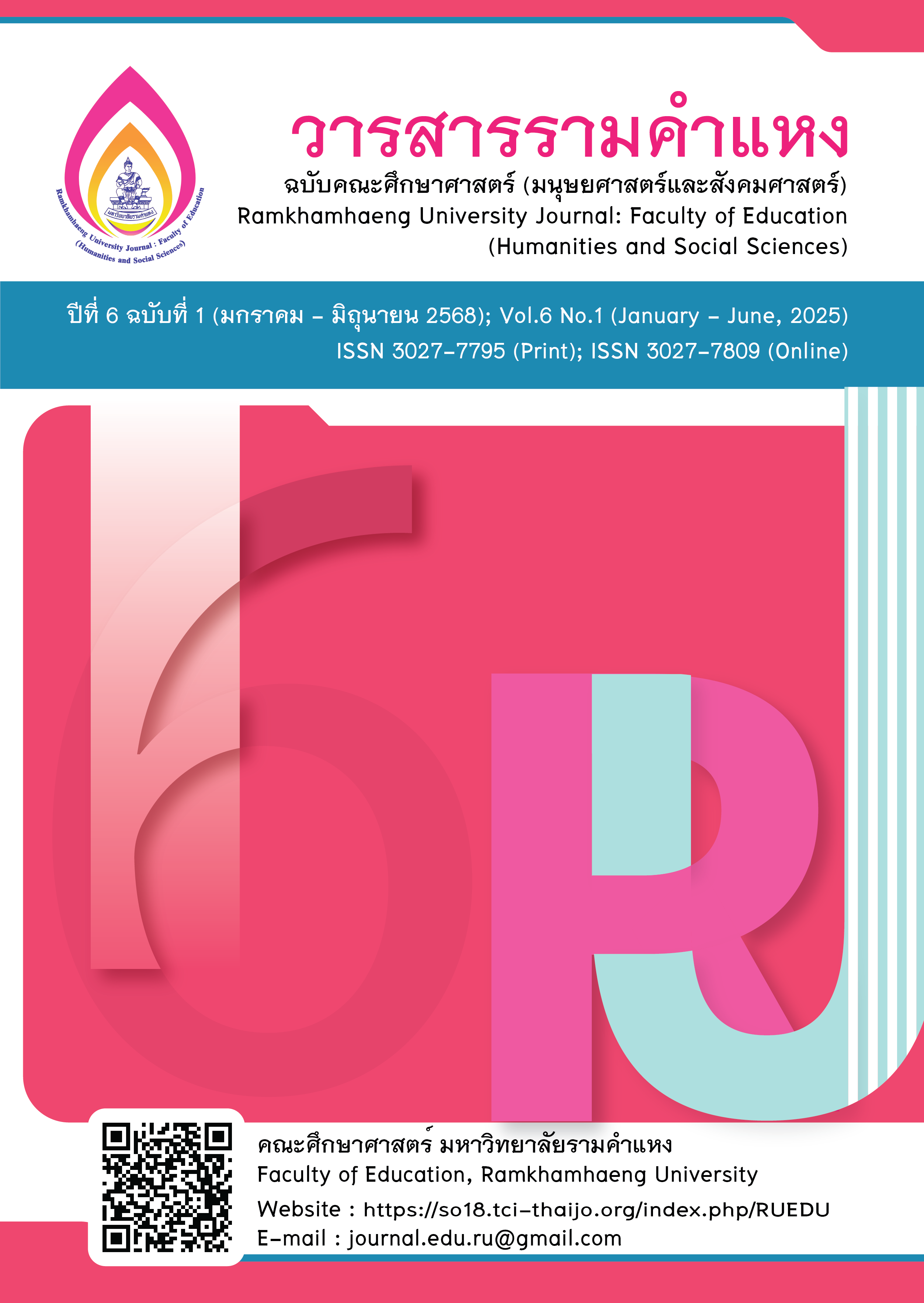Double-flipped Classroom: The Instruction to Enhance the Creative Thinking and Digital Skill
Main Article Content
Abstract
Double-flipped Classroom is the blended learning approach. It was extended from the (traditional) flipped classroom. The important principle; that is different from traditional flipped classroom, is that learning process can be directed by both of instructors and learners, because it provides learners and instructors opportunities to review, discuss, and explore digital content independently outside the traditional classroom, via the Web, and then work on projects in the classroom collectively to support instruction based on collaboration and share to learn, examine, or evaluate together. The students’ opportunity to create and share their digital files for learning. It is an important mechanism that enhances students’ creative thinking and digital skills.
Downloads
Article Details

This work is licensed under a Creative Commons Attribution-NonCommercial-NoDerivatives 4.0 International License.
ผู้ส่งบทความ (และคณะผู้วิจัยทุกคน) ตระหนักและปฎิบัติตามจริยธรรมการวิจัยอย่างเคร่งครัด ทั้งนี้บทความ เนื้อหา ข้อมูล ข้อความ ภาพ ตาราง แผนภาพ แผนผัง หรือข้อคิดเห็นใดๆ ที่ปรากฎในบทความ เป็นความคิดเห็นและความรับผิดชอบของผู้ส่งบทความ กองบรรณาธิการไม่จำเป็นต้องเห็นตามเสมอไป และไม่มีส่วนรับผิดชอบใดๆ โดยถือเป็นความรับผิดของของเจ้าของบทความเพียงผู้เดียว
References
Anderson, L. W., & Krathwohl, D. R. (2001). A taxonomy for learning, teaching, and sssessing: A revision of Bloom’s taxonomy of educational objectives. Addison Wesley Longman.
Alison, K. (1993). From sage on the stage to guide on the side. College Teaching, 41(1), 30–35. https://doi.org/10.1080 /87567555.1993.9926781
Bergmann, J., & Sams, A. (2012). Flip your classroom: Reach every student in every class every day. International Society for Technology in Education.
Bloom, B. S. (1956). Taxonomy of educational objectives. Handbook II: Affective Domain. Mckay.
Bull, P. (2014). Mobile and online instruction: Double-flipping a graduate level course to dupport instruction. In M. Searson & M. Ochoa (Eds.), Proceedings of SITE 2014--Society for Information Technology & Teacher Education International Conference (pp. 2080-2085). Jacksonville, Florida, United States: Association for the Advancement of Computing in Education (AACE). https://www.learntechlib .org/p/131095
Churches, A. (2008). Bloom’s digital taxonomy. https://www.researchgate.net/publication/228381038_ Bloom's _Digital_Taxonomy
Crouch, C., & Mazur, E. (2001). Peer instruction ten years of experience and results. American Journal of Physics, 69, 970-977.
Educational Service Division Suan Sunandha Rajabhat University. (2020). Teaching evaluation report. www.reg.ssru.ac.th/isqy32 (in Thai)
Faculty of Polymer Technology. (n.d.) Flipped classroom in theory: General framework, terminology and pedagogy. https://www.polyflip.eu/Flipped-classroom-in-theory/General-framework-terminology-and -pedagogy
Horn, M. B., & Staker, H. (2014). Blended: Using disruptive innovation to improve dchools. Jossey-Bass.
Keengwe, J., & Onchwaari, G. (2016). Handbook of research on active learning and the flipped classroom model in the digital age. The IGI Global book.
Office of the Civil Service Commission. (n.d.) Digital literacy project. https://www.ocsc.go.th/DLProject/meandlp (in Thai)
Sarria, A., & Molina, E. C. (2015). An innovation sensation: Shifting charter schools from traditional to blended learning models. http://charterschoolconference.com/2013/handouts/Carrandi_Blended_Learning _Model.pdf
Wongyai, W., & Patphol, M. (2019). Development of creative innovation dkills. Curriculum and Learning Innovation Leadership Center. http://www.curriculumandlearning.com/upload/Books/การสร้างสรรค์ นวัตกรรม_ 1567745143.pdf (in Thai)

